This pub is closed permanently. Your nearest Wetherspoon pub: The Friar Penketh
The Mad Hatter’s Tea Party was unveiled in Warrington Market Place in 1984. The large granite sculpture is a tribute to Lewis Carroll (real name Charles Lutwidge Dodgson) who was born at nearby Daresbury in 1832. The Mad Hatter features in Alice’s Adventures in Wonderland, published in 1865, and its equally popular sequel Through the Looking Glass.
Photographs and text about The Looking Glass.
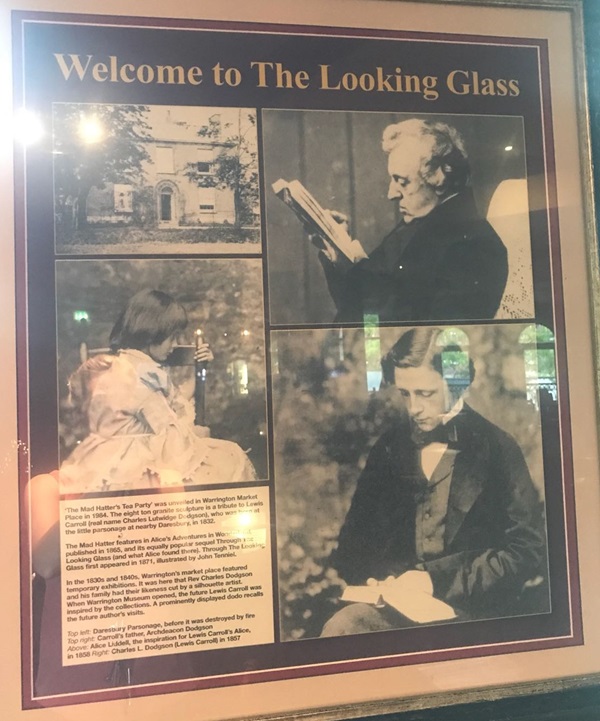
The text reads: The Mad Hatter’s Tea Party was unveiled in Warrington Market Place in 1984. The eight ton granite sculpture is a tribute to Lewis Carrol (real name Charles Lutwidge Dodgson), who was born at the little parsonage at nearby Daresbury, in 1832.
The Mad Hatter features in Alice’s Adventures in Wonderland, published in 1865, and its equally popular sequel Through The Looking Glass (and what Alice found there). Through The Looking Glass first appeared in 1871, illustrated by John Tenniel.
In the 1830s and 1840s, Warrington’s market place featured temporary exhibitions. It was here that Rev Charles Dodgson and his family had their likeness cut by a silhouette artist. When Warrington Museum opened, the future Lewis Carroll was inspired by the collections. A prominently displayed display dodo recalls the future author’s visits.
Top left: Daresbury Parsonage, before it was destroyed by fire
Top right: Carroll’s father, Archeacon Dodgson
Above: Alice Liddell, the inspiration for Lewis Carroll’s Alice, in 1858
Right: Charles L Dodgson (Lewis Carroll) in 1857.
A photograph and text about Lewis Carroll.
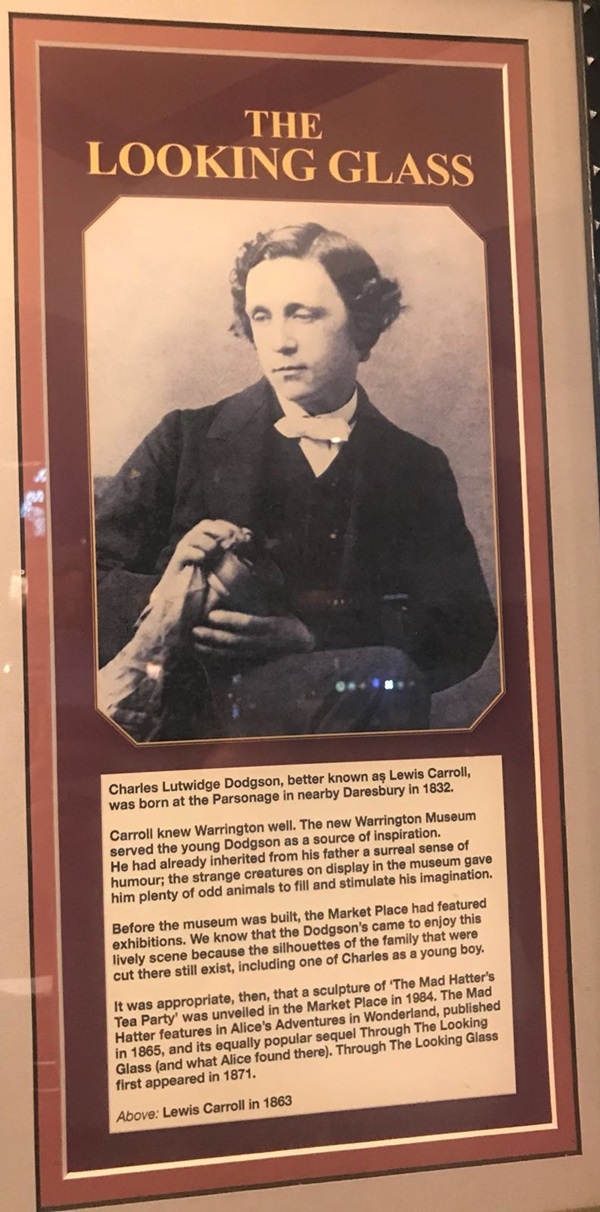
The text reads: Charles Lutwidge Dodgson, better known as Lewis Carroll, was born at the Parsonage in nearby Daresbury in 1832.
Carroll knew Warrington well. The new Warrington Museum served the young Dodgson as a source of inspiration. He had already inherited from his father a surreal sense of humour; the strange creatures on display in the museum gave him plenty of odd animals to fill and stimulate his imagination.
Before the museum was built, the Market Place had featured exhibitions. We know that the Dodgson’s came to enjoy this lively scene because the silhouettes of the family that were cut there still exist, including one of Charles as a young boy.
It was appropriate, then, that a sculpture of The Mad Hatter’s Tea Party was unveiled in the Market Place in 1984. The Mad Hatter features in Alice’s Adventures in Wonderland, published in 1865, and its equally popular sequel Through The Looking Glass (and what Alice found there). Through The Looking Glass first appeared in 1871.
Above: Lewis Carroll in 1863.
Illustrations of The Mad Hatter’s Tea Party.
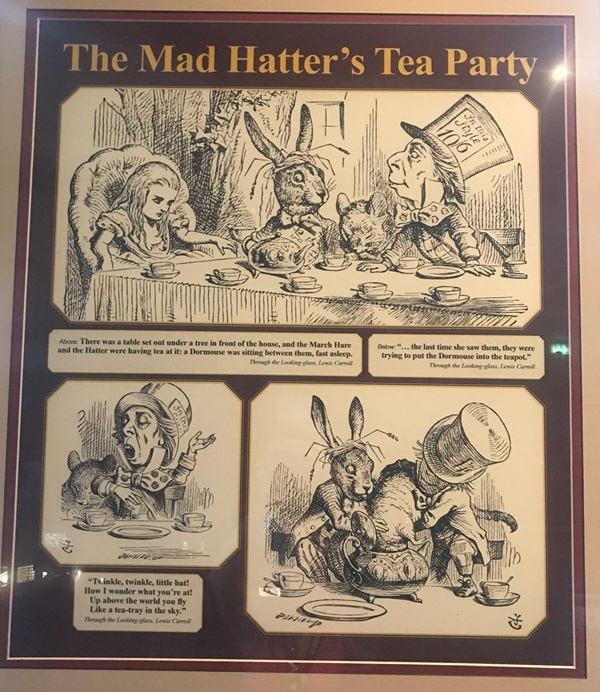
Above: There was a table set out under a tree in front of the house, and the March Hare and the Hatter were having tea at it: a Dormouse was sitting between them, fast asleep.
Below: “…the last time she saw them, they were trying to put the Dormouse into the teapot.”
Left: “Twinkle, twinkle, little bat!
How I wonder what you’re at!
Up above the world you fly
Like a tea-tray in the sky.”
Photographs and text about this former Odeon cinema.
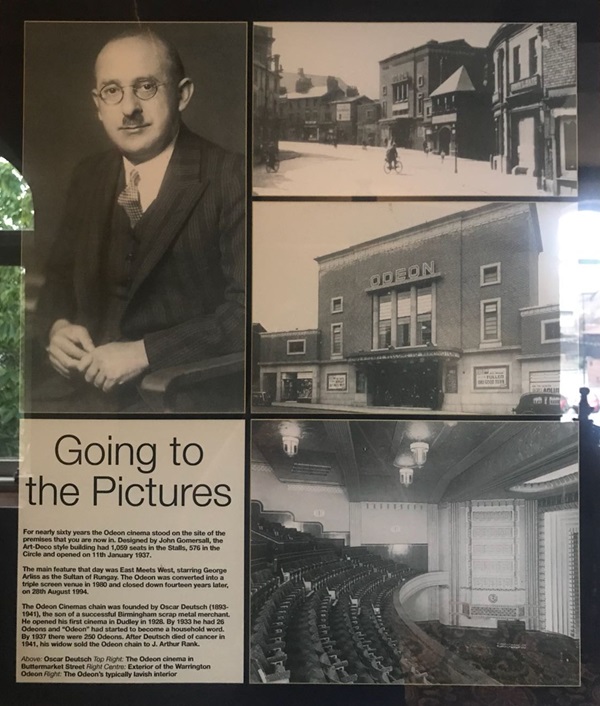
The text reads: For nearly sixty years the Odeon cinema stood on the site of the premises that you are now in. Designed by John Gomersall, the Art-Deco style building had 1,059 seats in the Stalls, 576 in the Circle and opened on 11 January 1937.
The main feature that day was East Meets West, starring George Arliss as the Sultan of Rungay. The Odeon was converted into a triple screen venue in 1980 and closed down fourteen years later, on 28 August 1994.
The Odeon Cinemas chain was founded by Oscar Deutsch (1893-1941), the son of a successful Birmingham scrap metal merchant. He opened his first cinema in Dudley in 1928. By 1922 he had 26 Odeons and “Odeon” had started to become a household word. By 1937 there were 250 Odeons. After Deutsch died of cancer in 1941, his widow sold the Odeon chain to J Arthur Rank.
Above: Oscar Deutch
Top right: The Odeon cinema in Buttermarket Street
Right centre: Exterior of the Warrington Odeon
Right: The Odeon’s typically lavish interior.
External photograph of the building – main entrance.
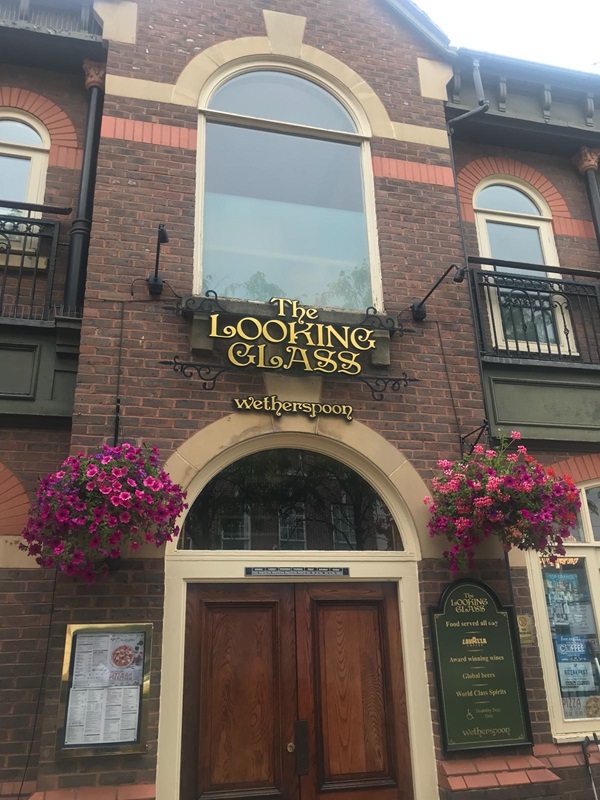
If you have information on the history of this pub, then we’d like you to share it with us. Please e-mail all information to: pubhistories@jdwetherspoon.co.uk